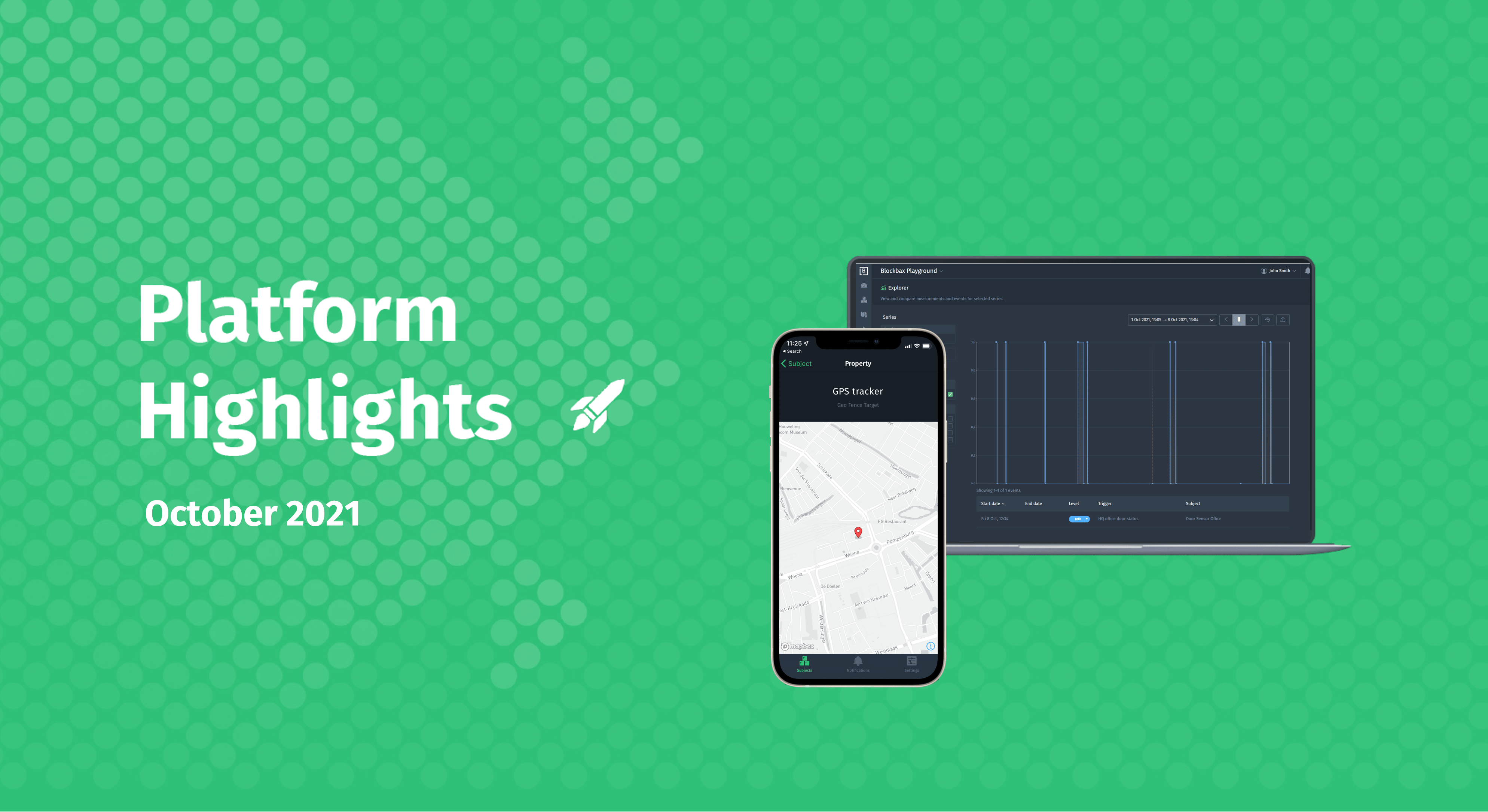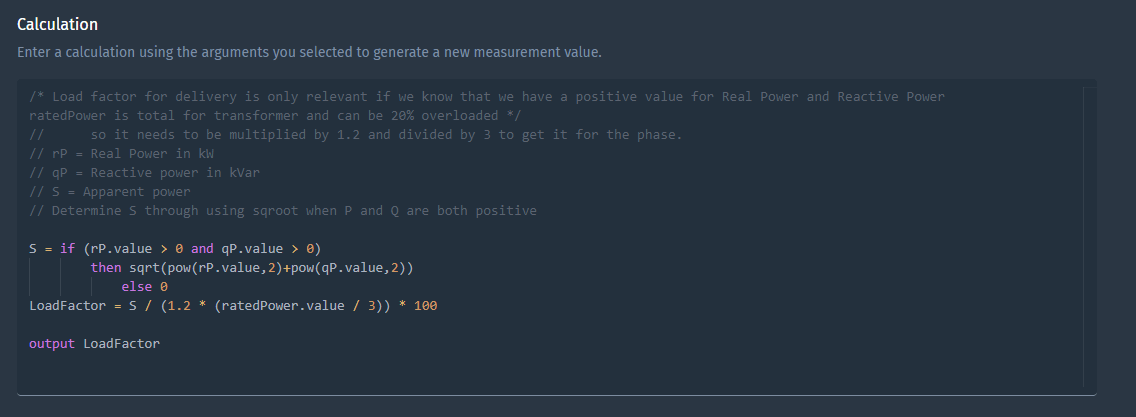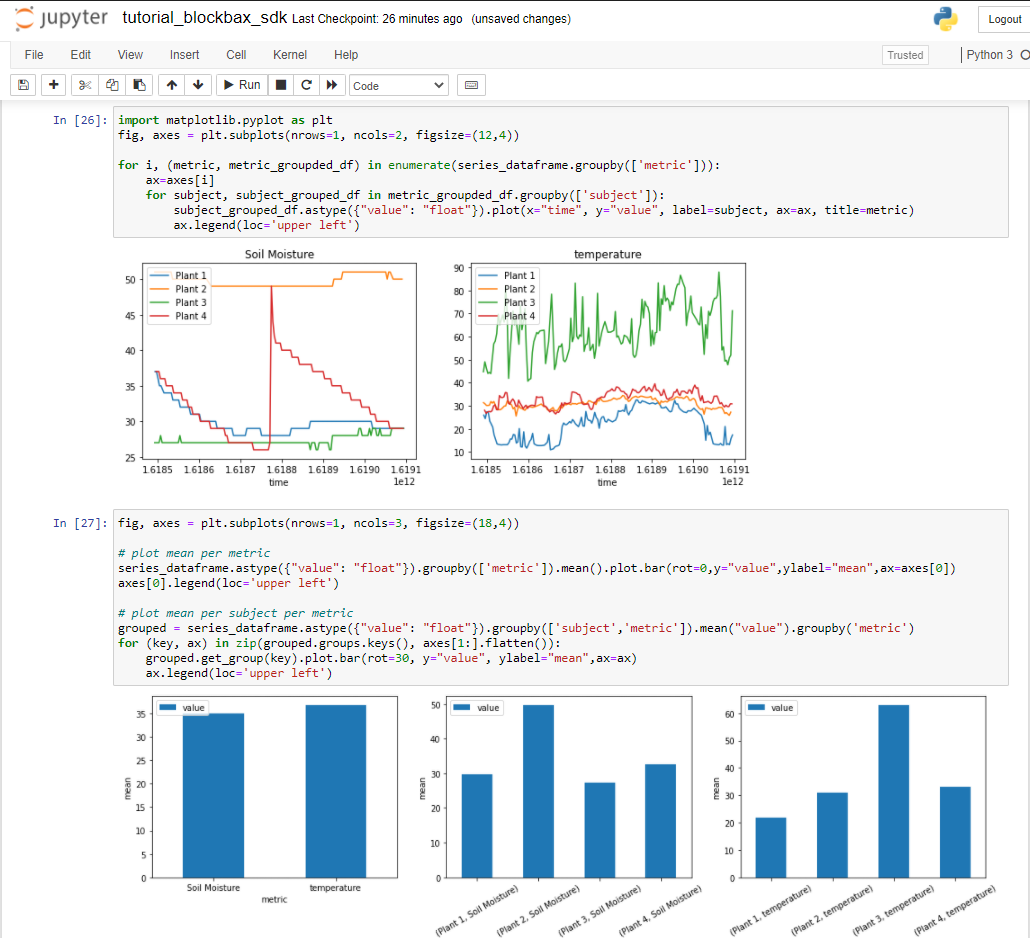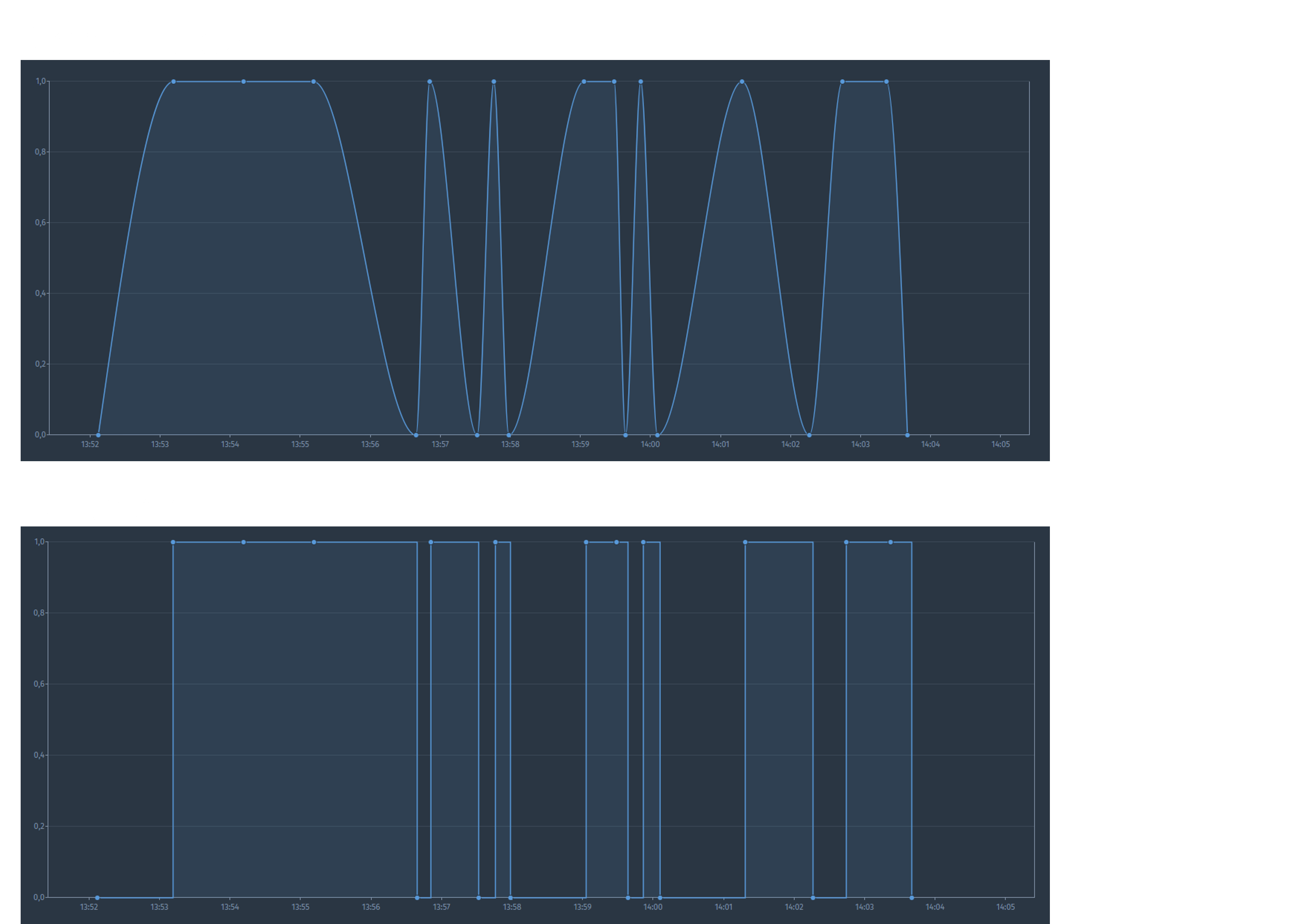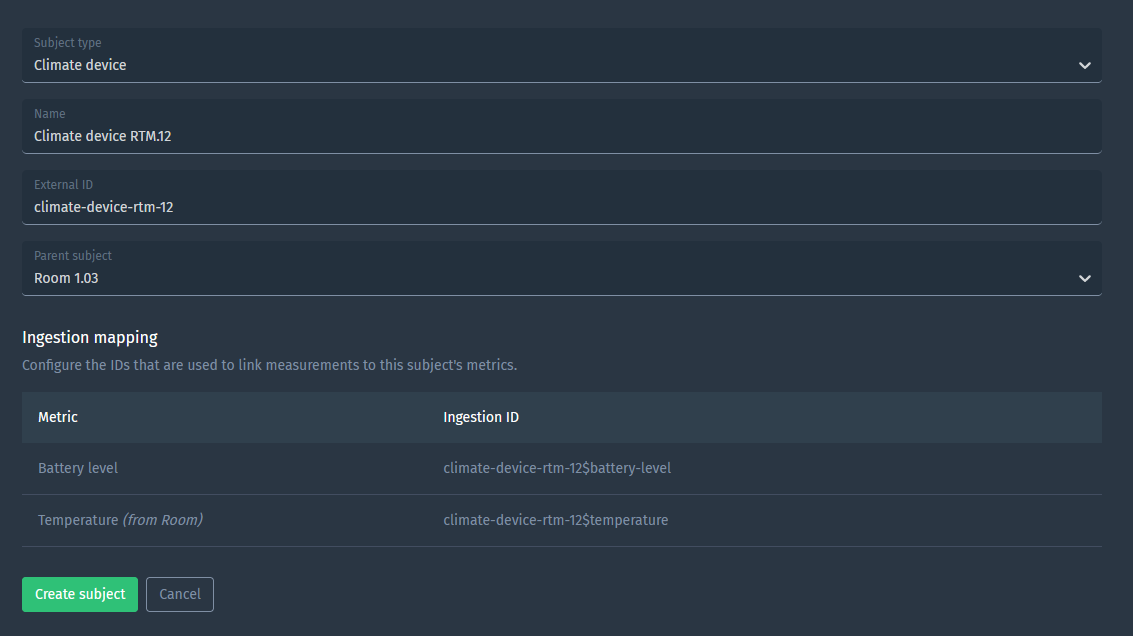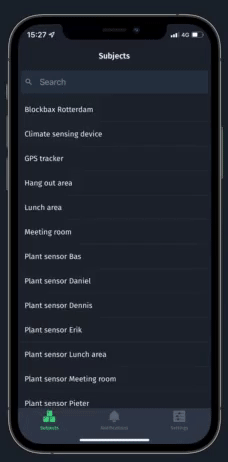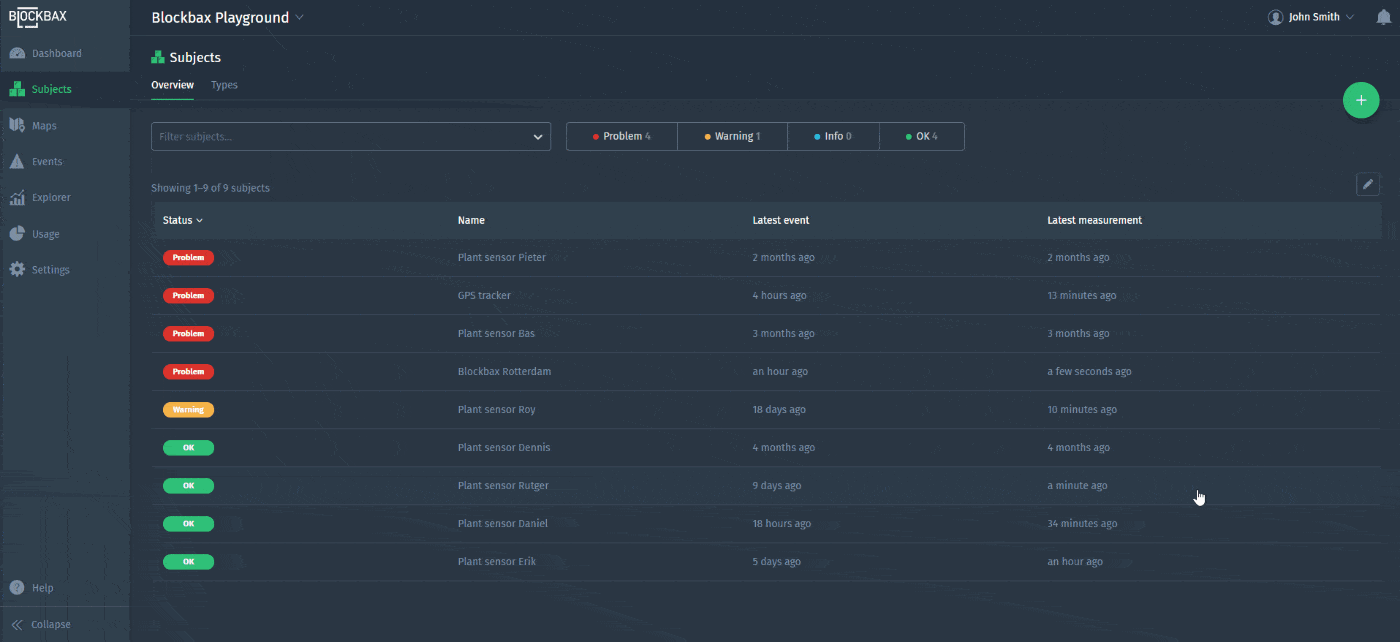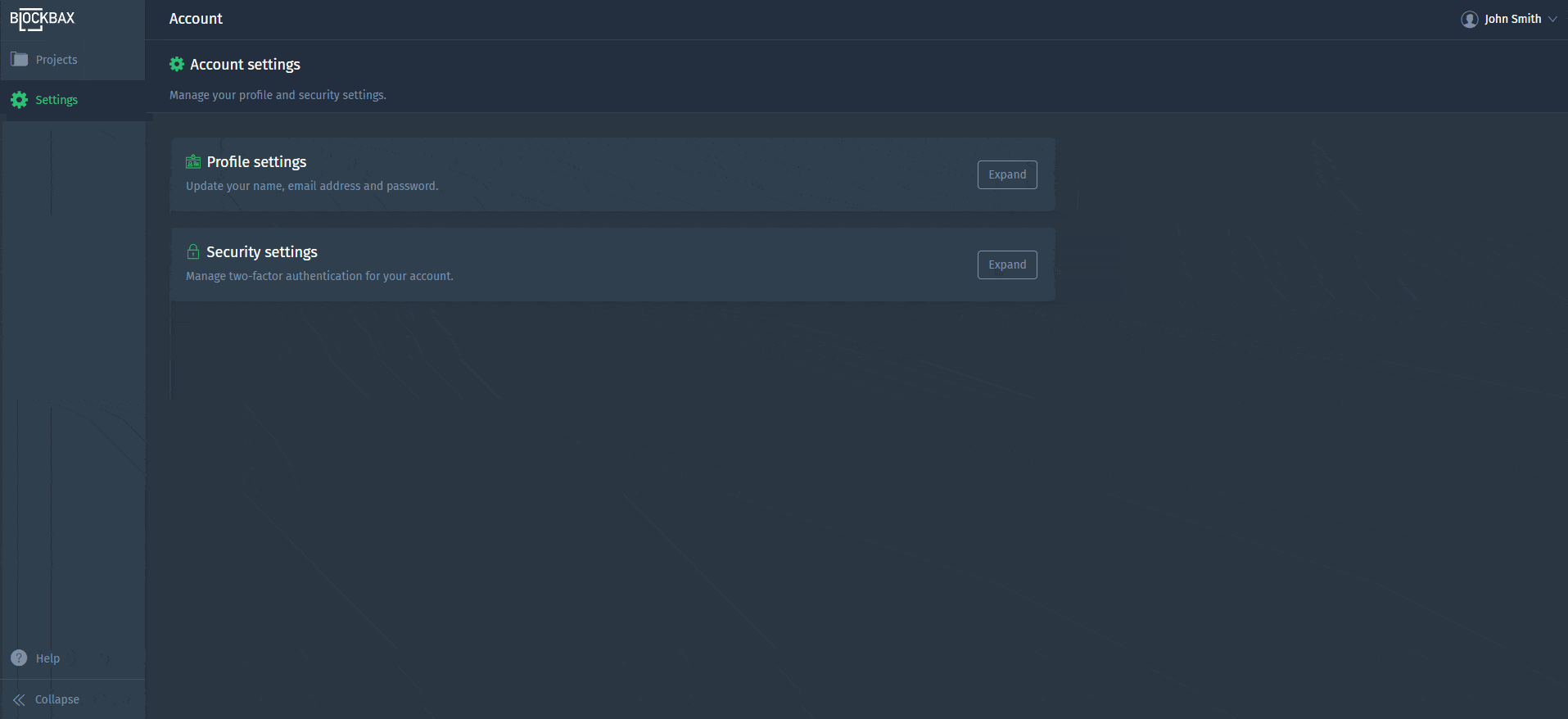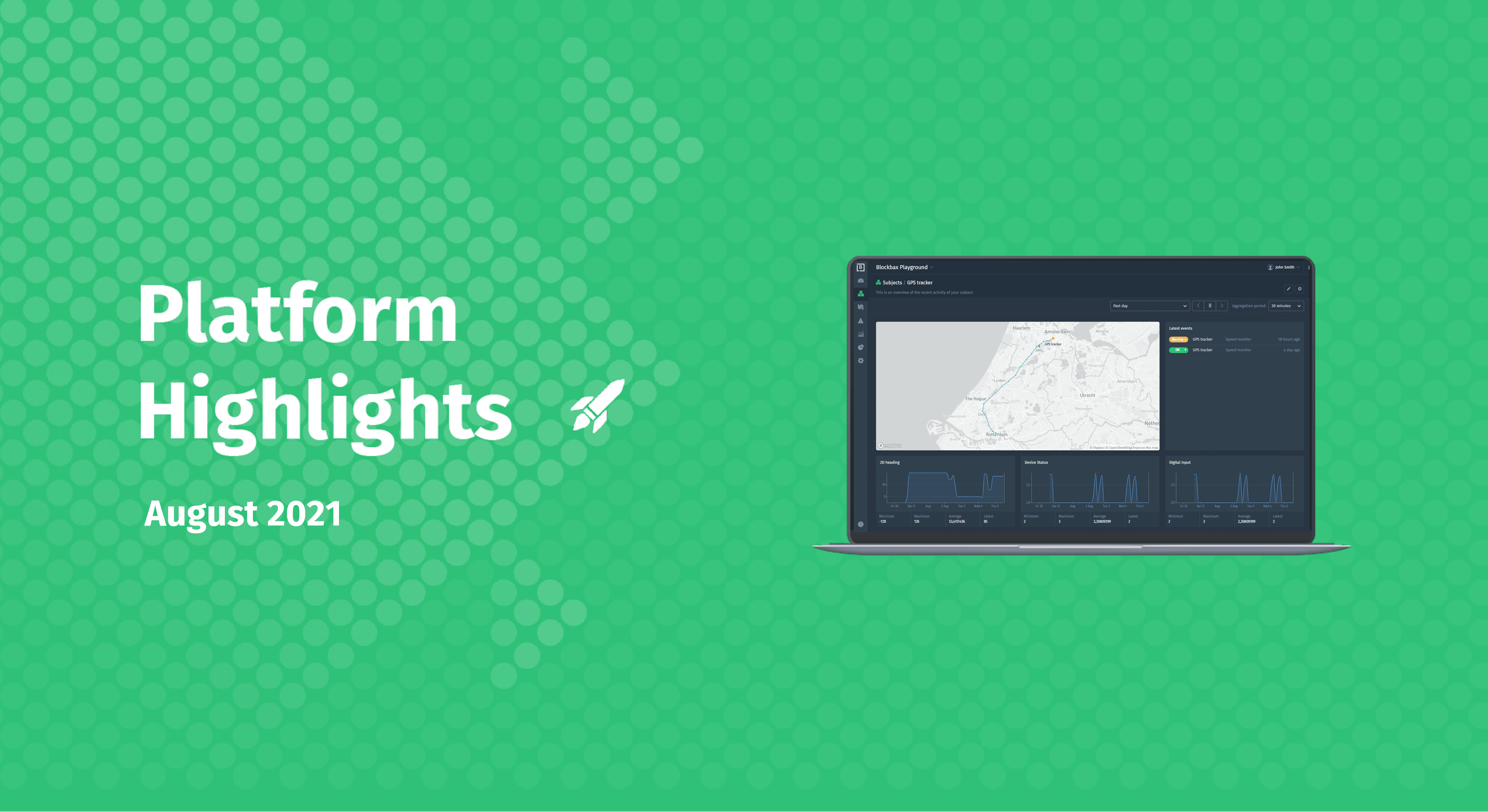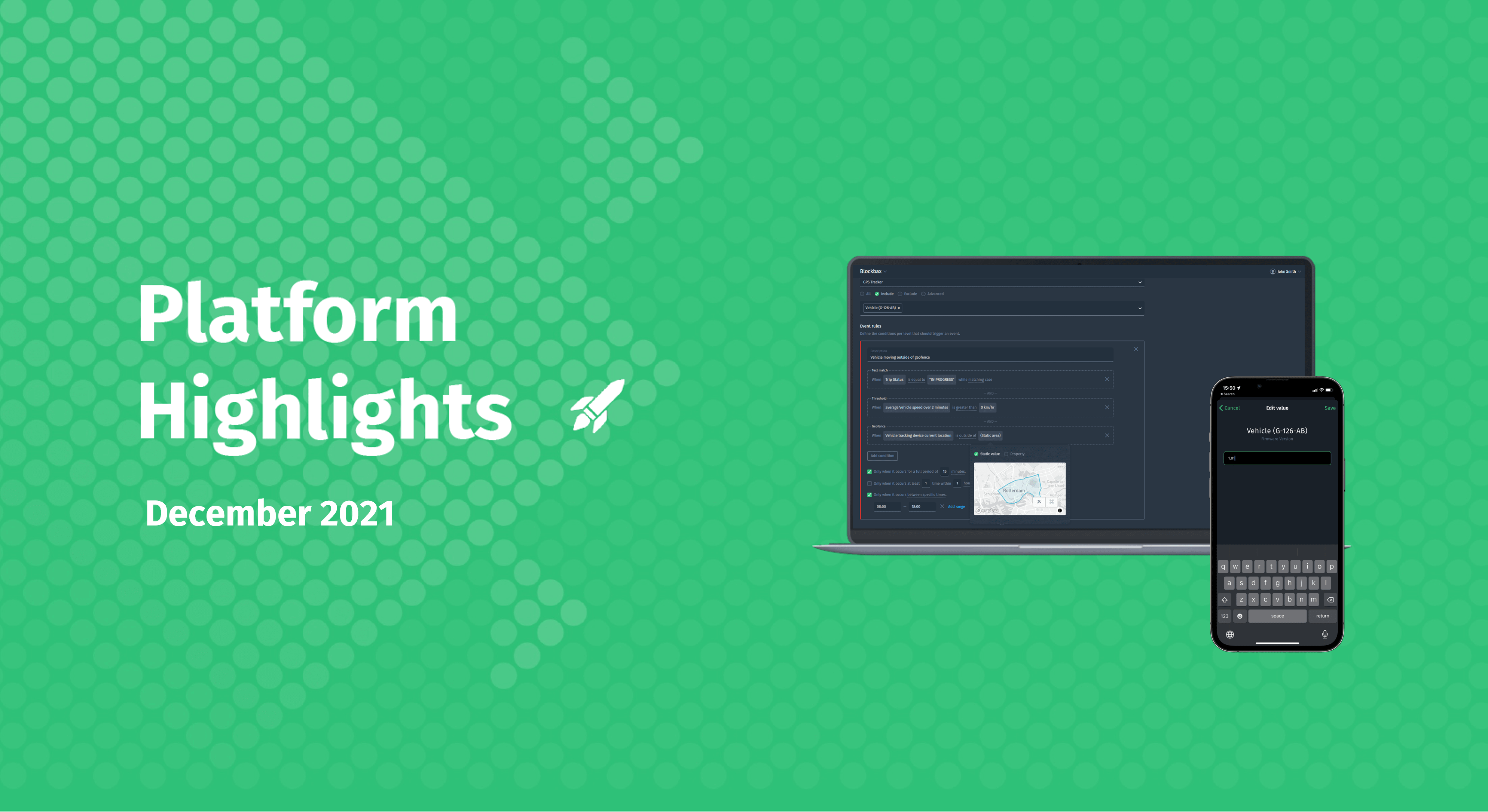October 8, 2021 · 7 min read
Blockbax Platform highlights
We 💚 fast and frequent releases. New features are added on a daily basis, and this blog series will showcase our favorite new features. This blog’s highlights:
- Conditionals
- Python SDK
- Measurement filters
- Discrete values in graphs
- Mapping level
- Mobile app update
- External ID in subject overview
- Sensors connection guides
Conditionals
Our calculated metric editor has been extended to allow the use of conditionals, the following has been added to the editor:
- if-then-else statements
- and
- or
Making use of conditionals extends your ability to perform powerful operations based on the defined conditions. An example can be found below, and you can navigate to the conditionals documentation to read more.
Python SDK
A large new release that we are extremely proud of is the release of our Python SDK. This SDK will facilitate developers to integrate quicker and more easily with the Blockbax Platform. It allows you to get, create, update and delete resources without the intricacies of having to deal with HTTP requests and responses.
Alongside the release of the feature, we also offer documentation to help you get started.
Below you’ll find a simple example of the SDK with a Jupyter notebook.
Measurement filters
In certain situations, you may not have the ability to filter the data that you wish to send from your device to the Blockbax Platform. This can result in a lot of measurements that add little value to the insights you wish to obtain. In order to optimize costs we are releasing a new add-on to our platform, namely Measurement filtering.
With this new add-on you are able to configure certain rules in our platform related to the retention of measurements. For example to retain only measurements if there is a significant deviation compared to a previous value. By setting up these rules, you will notice that measurements that do not meet the specified rules will be considered filtered out and can not be used throughout the platform.
These unretained measurements are priced at a fraction of your retained measurements. If you’re interested in learning more about this add-on and want to enable it in your projects feel free to get in touch with us.
Discrete values in graphs
Metrics with value type discrete will be shown in a step chart, the difference is displayed in the screenshot found below. Discrete values are also shown in a line graph, but with the line forming a series of steps between data points. A simple example shown below is a line chart depicting the status of a door sensor which returns 0 when the door is closed, and 1 when the door is opened.
Mapping level
One major use case of subject composition is to define relationships between assets and sensor devices. In some cases devices are moved from one asset to the next. In the previous situation your device’s measurements also moved completely to the next asset. This is desired for measurements you want to keep at device-level (e.g. the battery level of your device). However in most cases this isn’t desired when devices measure something for an asset (e.g. temperature of a room). You want to keep these measurements at asset-level instead of device-level. In order to support this use case we introduced the mapping level option to an ingested metric.
For example to implement the example above you would create a temperature metric at your Room’s subject type (asset-level) and set the mapping level at ‘Configure ingestion IDs on child subjects’. Make sure you have your Device subject type set up with Room as its parent type. Now when creating specific devices you will notice an ingestion mapping for this metric as well.
Mobile app update
We decided to give our mobile app some attention and expanded the functionality. When you log into the mobile application you will now land on an overview of subjects. You are able to search through the list and tap a subject in order to see a detailed view. The detailed view of the subject shows the latest measurement, as well as the ability to view the subjects properties. Besides being able to see text and number data types, you are also able to view locations on a map, images, and map layers!
Try it out for yourselves!
External ID in subject overview
Need your subject’s external ID at a quick glance? Have a look at how you can easily add this to your subject overview page:
Sensors connection guides
The connection guides section has been expanded to include sensors as well. We are consistently keeping our eyes open for frequently used devices and writing tutorials and documentation to make it even easier and quicker to connect these devices to the Blockbax Platform. Keep an eye on the documentation, there is more to come.
| Manufacturer | Description |
|---|---|
 | Airthings offers devices used for radon and indoor air quality monitoring. |
 | Digital Matter offers a large portfolio of LPWAN, integration-ready and battery-powered asset tracking devices across a range of connectivity technologies. |
 | Janitza has a wide range of energy and power monitoring sensors. These sensors help you gain a comprehensive overview of your energy supplies and introduce widely accepted measures and standards (e.g. EN50160 for power quality). |
Pro-tip: Two-factor authentication
Did you know that you’re able to enable two-factor authentication for your account? To protect your Blockbax user account, we suggest enabling it. Head over to your Account Settings page, expand the Security Sections, and set up two-factor authentication using your favorite authenticator application. We especially recommend this to users with administrator access and up.
Ready to try it out?
All features and improvements mentioned in this blog are available to use right now! Are you new to Blockbax and do you want to see it in action? You can reach out to us and we will get back to you quickly.
Enjoy using all these cool new features and stay tuned for more editions of this blog series for more new features that we are currently building!
Cheers,
The Blockbax Team.
